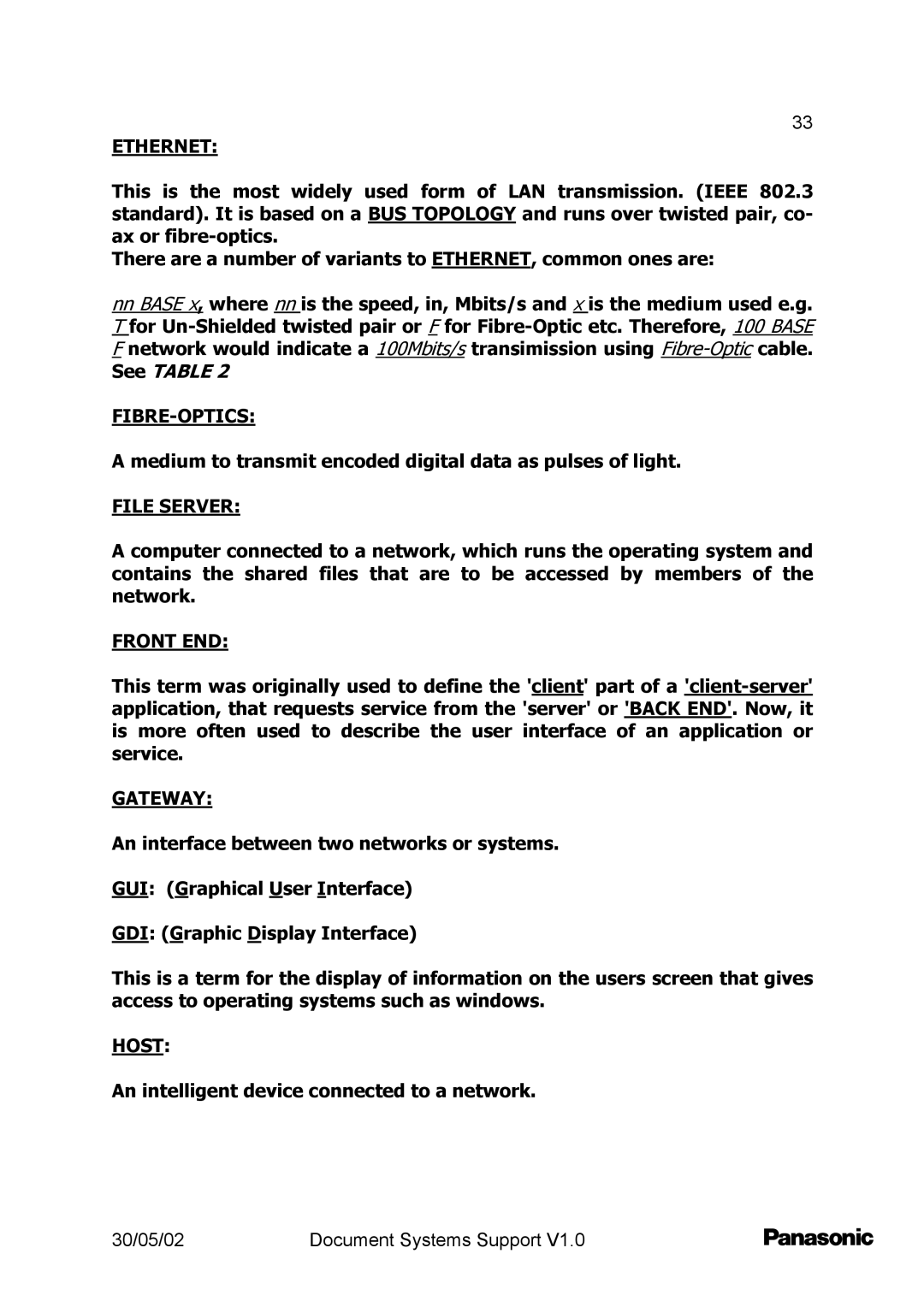33
ETHERNET:
This is the most widely used form of LAN transmission. (IEEE 802.3 standard). It is based on a BUS TOPOLOGY and runs over twisted pair, co- ax or
There are a number of variants to ETHERNET, common ones are:
nnBASE x, where nn is the speed, in, Mbits/s and x is the medium used e.g. T for
See TABLE 2
FIBRE-OPTICS:
A medium to transmit encoded digital data as pulses of light.
FILE SERVER:
A computer connected to a network, which runs the operating system and contains the shared files that are to be accessed by members of the network.
FRONT END:
This term was originally used to define the 'client' part of a
GATEWAY:
An interface between two networks or systems.
GUI: (Graphical User Interface)
GDI: (Graphic Display Interface)
This is a term for the display of information on the users screen that gives access to operating systems such as windows.
HOST:
An intelligent device connected to a network.
30/05/02 | Document Systems Support V1.0 |
